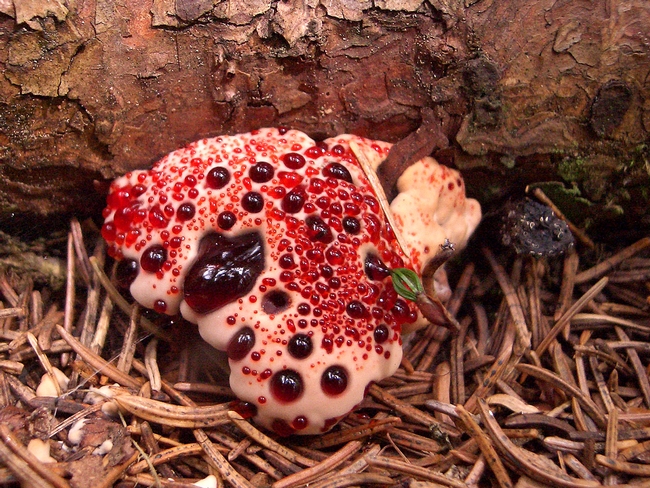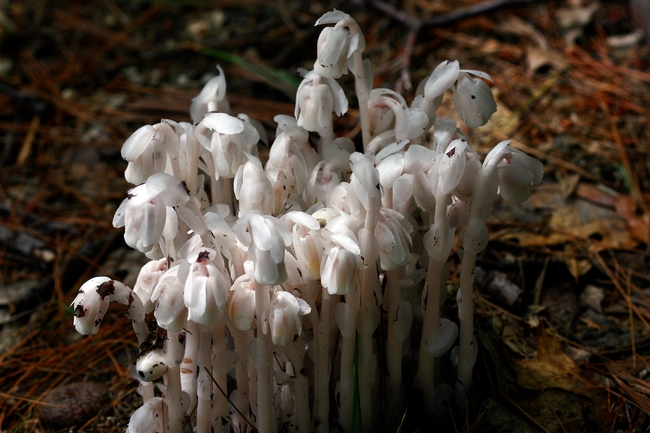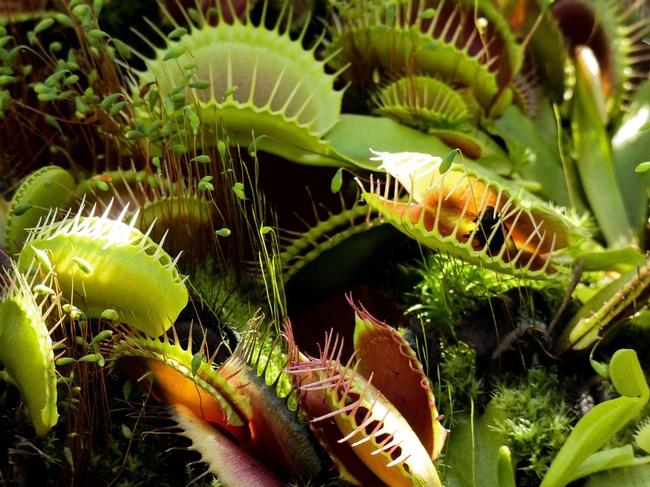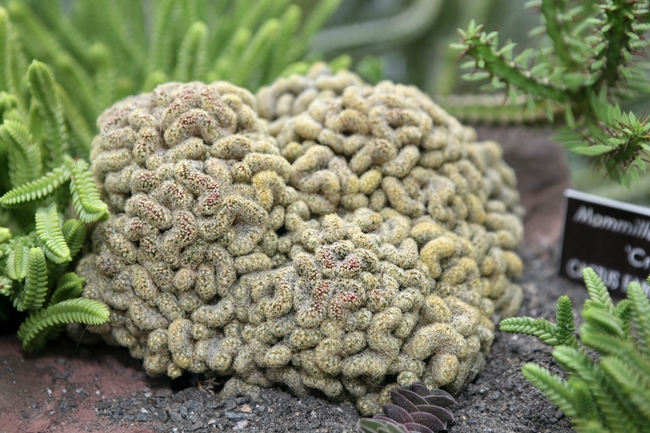“Be very afraid…….Be deathly afraid,” of these very spooky garden inhabitants for Halloween!
When you think of Halloween, the first things that come to mind are ghosts, goblins, ghouls, and other spooky creatures. Did you know that spooky fungi and plants can also be lurking in your garden? Creepy fungi and plants exist, and are the perfect opportunity to put the scare into your landscape.
If you're trying to conjure up a terrifying garden or create a truly inspired spine-chilling floral display for Halloween, you may want to include one or two of these frightening garden dwellers. Read on at your own risk! 
Bleeding tooth fungus or ‘devil's tooth'
Scientifically known as Hydellum peckii, bleeding tooth is a fungus. This fungus gets its name from the thick red fluid that oozes through tiny pores across the white cap, generating the appearance of blood. The red gooey sap is the result of guttation, a process that occurs in moist conditions where excess root pressure forces water out of the plant or fungus. This mushroom can be spotted in America's Pacific Northwest and in Europe. It is typically present among moss and pine needles in coniferous forests. Despite its ghastly appearance, the mushroom is not toxic, but also not recommended for consumption. Bleeding tooth fungus contains atromentin, a chemical which has effective antibacterial and anticoagulant properties like heparin (prevents formation of blood clots). Not only is the mushroom used medically, the ruby red like goo is also used in textiles to produce colorful pigments. 
Ghost plant
Scientifically known as Monotropa uniflora, this plant is a perennial wildflower in the blueberry family. The entire plant is translucent, often appearing almost “ghostly” white. The “ghostly” white droopy flowers of the plant resemble spooky white figures found in dark, chilling underground crypts. This plant is found throughout the United States in deep, shady, rich woods at low to moderate elevations. Ghost plant is parasitic; it feeds on other organisms. These flowering plants don't photosynthesize, meaning they don't need light to grow. In fact, the ghost plant can actually grow in the dark, making for a truly frightful night.
Venus flytrap
Scientifically known as Dionaea muscipula, Venus flytrap is a carnivorous plant. This particular plant may remind you of the famous movie Little Shop of Horrors. “Feed me, Seymour”, is a quote you may remember. The Venus flytrap is a predator in the plant world. It has several small, tooth-like structures that serve as a “mouth”. This “mouth” closes around unsuspecting insects that the plant has lured in. Once the insect is caught, the plant emits enzymes that slowly digests the bugs. What remains is a brittle figure of appendages and the exoskeleton of the insect. The nutrients extracted, specifically nitrogen, are then absorbed into the plant. This nitrogen assists in the plants' survival in unfriendly environments. This carnivorous plant is native to North America, mostly found in subtropical wetlands in North and South Carolina. Because of its “alien” like appearance, the Venus flytrap would make for a petrifying addition in any home.
Brain cactus
Scientifically known as Mammillaria elongata ‘Cristata', this cactus is a popular houseplant or outdoor specimen plant (in warmer climates). This gruesome looking plant has unusual development patterns because when it grows it appears to look like a zombies favorite treat, the human brain. An interesting fact about this cactus is how the shape occurs. The brain cactus is a mutant form of a cactus that is supposed to grow straight finger-like formations. Cristata's mutation creates a crested appearance for the plant and cause the pads of the plant to twist. Brain cactus is native to Central Mexico, they grow in rocky outcroppings and between crevasses.
As you can see, fungi and plants do some pretty creepy things! They do anything from oozing blood-like fluid, growing in the dark, devouring unsuspecting insects, to looking like human brains. Whether or not Halloween costumes are your thing, there is still an opportunity to get your scare on this Halloween season. Conjuring up a display of any of these garden dwellers will definitely bring some spine chilling reactions.
Have a wonderful, safe, and spooky Halloween!

